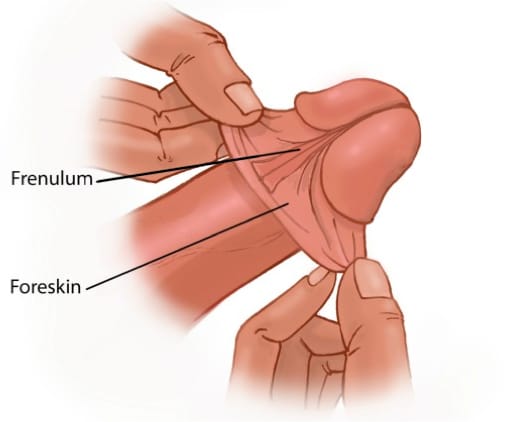Foreskin - No longer a mysterious entity hidden from our understanding, but rather an essential component of male anatomy that deserves recognition. Let's delve into the world of foreskin to unravel its functions, address misconceptions, and shed light on its importance.

Understanding Foreskin
The foreskin is a retractable fold of skin that covers the head (glans) of the penis. Present in all males at birth, it serves as a protective covering for the sensitive glans. Foreskin is rich in specialized nerve endings and is designed to maintain the glans' inherent moisture, temperature, and sensitivity. It is worth noting that foreskin is not a redundant or unnecessary part, as some misconceptions may suggest.
Functions of Foreskin
1. Protection: Acting as a natural barrier, the foreskin safeguards the glans, keeping it shielded from external irritants and maintaining its soft and sensitive nature.
2. Sensitivity and Pleasure: The foreskin is anatomically innervated, rendering it highly sensitive to touch, pressure, and temperature, leading to enhanced sexual pleasure.
3. Lubrication: Foreskin produces naturally occurring oils that aid in personal hygiene and contribute to frictionless sexual intercourse.
Myths and Misconceptions
There are several misconceptions surrounding foreskin that have perpetuated over time. Here, we debunk some of the most common ones:
1. Lack of Cleanliness: It is often believed that an uncircumcised penis is unclean or prone to infections. However, with proper hygiene practices, maintaining foreskin cleanliness is simple and poses no greater risk than a circumcised penis.
2. Medical Benefits: Some unfounded claims state that circumcision reduces the risk of certain diseases or infections. However, the World Health Organization (WHO) states that the protective effect of circumcision against these conditions is limited and can be mitigated with other effective preventive measures.
The Importance of Foreskin
Foreskin, like any other part of the body, serves a fundamental purpose and should be regarded with respect. Its presence provides numerous advantages, including improved sexual function and preserving the sensitivity of the glans. Recognizing the importance of foreskin is crucial to promoting body positivity, dispelling myths, and facilitating informed decisions regarding circumcision.
In conclusion, understanding what foreskin is, its functions, debunking associated myths, and acknowledging its significance in male health is essential. It is time to appreciate the uniqueness of the human body, including this intricate and purposeful part known as the foreskin.
Related FAQs about what is foreskin
What is the purpose of foreskin?
Foreskin serves as a protective covering for the sensitive glans of the penis, maintaining its moisture, temperature, and sensitivity.
Is foreskin essential for sexual pleasure?
Yes, the foreskin is highly sensitive and contributes to enhanced sexual pleasure due to its rich innervation.
Do uncircumcised penises require special hygiene measures?
While uncircumcised penises require regular hygiene practices, maintaining foreskin cleanliness is straightforward and poses no greater risk compared to a circumcised penis.
Does circumcision provide significant medical benefits?
The World Health Organization (WHO) states that the medical benefits of circumcision are limited, and alternative preventive measures are equally effective for reducing the risk of certain diseases or infections.
Why is it important to acknowledge the significance of foreskin?
Recognizing the importance of foreskin helps promote body positivity, dispel myths, and allows individuals to make informed decisions regarding circumcision.
Glossary about what is foreskin
1. Foreskin: The retractable fold of skin that covers the head (glans) of the penis.
2. Glans: The sensitive head of the penis.
3. Penis: The male reproductive organ responsible for urination and sexual intercourse.
4. Anatomy: The branch of biology that deals with the structure and organization of living organisms.
5. Nerve Endings: Specialized sensory receptors that detect stimuli such as touch, pressure, or temperature.
6. Personal Hygiene: Practices or habits that individuals perform to maintain cleanliness and prevent diseases.
7. Circumcision: The surgical removal of the foreskin from the penis.
8. World Health Organization (WHO): A specialized agency of the United Nations responsible for international public health.
9. Body Positivity: A social movement that aims to promote acceptance and appreciation of all body types, including body parts that are often stigmatized.
10. Sexual Function: Referring to the physiological and psychological aspects involved in sexual activity and reproduction.
